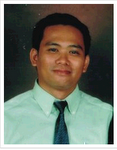Long-lasting states ad may adversely affect interpersonal relationships and development; exposure to the most extreme kinds of trauma (for example, pisoner-of-war and death camps) may result in partculary severe and persistent states of PTSD.
Group trauma and the loss of the community may complicate the course of PTSD, as may engagement in litigation and extensive media coverage. The media serve a constant and often uncontrolled reminders of the trauma and as evokers of negative affect. The nature of a particular trauma can be both of a pathological risk factor for PTSD and a determinant of symptom expression. For example, being extremely confined spaces, such as underground tunnels in wartime, can give rise to panic symptoms. Participation in abusive violence leads to a predominance of denial and numbing, whereas witnessin such acts as a nonparticipant result in a predominance of reexperining symptoms.
Social support consistently relates to the risk of developing PTSD. The presence of social support has a buffering affect; lack of support serve as a vulnerability factor. Lack of support can be a preexisting vulnerability fator, or it can develop when trauma victims become separated from their social support networks(for example, in a natural disaster or mass genocide).
Additional premorbid risk factors from epidemiological and treatment-seeking samples include a family history of psychiatric illness in general and of anxiety disorder in particular, previous psychiatric disorders, personality traits of high neuroicism and poor self-confidence, early separation of parents, parental proverty, behavioral misconduct in childhood, limited education, adverse life events before the trauma, being feamale, and the quantity of alcohol ingested.
Epidemiologic data identify the risk factors for exposure to trauma, as they are somewhat different from the risk factors for posttraumatic stress disorder once the trauma has occurred. One study found the six strongest predictors of exposure to trauma to be male sex, absence of a college education, extroversion, neuroticism, early misconduct, and family psychiatric illness. By contrast, the six strongest predictors for risk of PTSD are female sex, neuroticm, early separation for parents, prior anxiety or depression, familial anxiety, and familial anxiety, and familial antisocial personality disorder.
Knowledge of the causative and the risk factors of the disorder can guide the efforts at early recognition and prevention of the disorder.
The Clinical Picture of Post-Traumatic Stress Disorder
Symptoms experienced by individuals with post-traumatic stress disorder (PTSD) are identified in Figure 14-3. The three major features of PTSD are (1) re-experiencing the trauma through dreams and waking thoughts, (2) having emotional numbing to other life events and relationships, and (3) having symptoms of depression, poor concentration, and other cognitive difficulties.
PTSD has two subtypes: acute and chronic. The acute disorder is diagnosed when symptoms occur within six months of the trauma. The delayed or chronic type is diagnosed when the onset of symptoms is delayed at least six months. PTSD may occur following any psychologically traumatic event that is outside the range of usual experience. Such as military combat, natural disaster (e.g., floods or earthquakes), man-made disaster (e.g., car or airplane crashes, bombings, or torture), and crime-related events (e.g., assaults, muggings, robberies, rapes, or hostage-taking). After a devastating disaster, 50-80% of the survivors may experience PTSD (Kaplan and Sadock 1991)
Exposure to a highly traumatic event predisposes an individual to the development of PTSD and signals a potensial need for help in coming to terms with the experience. We learned all to well from the Korean and Vietnam wars that for combat veterans to resume a normal civilian life, they must come to terms with their war experiences. If resolution does not occur, PTSD can result. More recently, medical facilities are seeing more clients who have experienced sexual or physical abuse in childhood and are presenting with the same cluster of symptoms seen in PTSD (Schatzberg and Cole 1991). Particularly disturbing to clients are the intrusive symptoms, such as nightmares, flashbacks, an memories of traumatic events. Nightmares and flashbacks may be related to changes in catecholmine transmission, with the possibility existing that flashbacks are waking nightmares (Post-traumatic Stress: Part 1 1991).
The hypervigilance experienced by most individuals with PTSD creates its own set problems. PTSD victims seem to be attempting to prepare themselves for another traumatic event by being overly alert to danger. As a result, their bodies are in an almost permanent state of physiological arousal.
Because the symptoms of disorder are not as well defined as those of other an anxiety disorders, the disorder may go undiagnosed. The individual may seek relief by developing additional symptoms, such as physiological complaints (e.g., headaches, ulcers, or hypertension) or phobias, or by developing chemical dependence and abuse. Suicide attempts and intermittent psychothic episodes may occur, and problems axisting before the traumatic event, such as impulsiveness or antisocial tendencies, may be intensified.
Difficulty in interpersonal relationships almost always occurs and may be manifested in many ways. The PTSD victim frequently states that he or she has turned off feelings and is empty inside. The psychic numbing protects the client from feelings associated with intense stress. Avoiding emotional attachment may become a learned response to protect the individual from experiencing the pain of multiple losses stemming from, for example, combat or natural disasters. Thrill-seeking behavior may also be noted. Thrill seeking allows feelings to surface and aggression to be mobilized. Spouse and child abuse may occur as part of PTSD. Struggles with bosses, family, and coworkers are frequent themes, as is having difficulty trusting others. The last is a recurrent theme among rape victims.




















